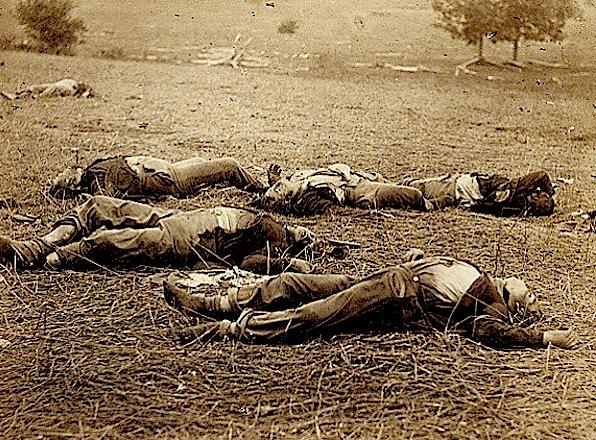Isa Freeling explores a new exhibition of Civil War Photographs at the Metropolitan Museum of Art in New York where “humanity seems to call out from the grave”
The Civil War photographs of 1861 to 1865 at the Metropolitan Museum of Art remind us of the egregious, conflicted history of the United States. Yet they also send us back into the fascinating world of images drawn from technology’s earliest days when seedlings were just surfacing. There are myriad opportunities to experience this particular period with all sorts of photograph “types,” including Carte de Viste, Ambrotypes, Hallotypes and Ivorytypes, to name a few. All appear as smoky shades of white, black, and gray, and, in some cases, photographs were touched up with water color to achieve greater realism. These photographs were often used widely and plentifully by abolitionists to show that slavery was not just some benign practice.
While roaming this exhibition hall, humanity seems to call out from the grave at its most noble and heroic, residing in both its least and most favorable light. One remarkable photograph shows a beardless Abe Lincoln in a portrait taken for the Republican nomination. Pictured just a few feet away we see Gordon, a horribly whipped runaway slave, who has escaped to a Union camp after walking ten days and 80 miles to fight against the Confederates. This menagerie of visions, of both Union and Confederate devastation, revealed through the eyes of the subject, object and storyteller is haunting to say the least, no less now as it was then.
It was extremely popular to be photographed at the onset of this war. Soldiers had their images taken as well as those of their loved ones, for obvious reasons. Beyond our super-real experience of today’s photographic multidimensional reality, one-dimensional stillness seems supernatural in these pictures. The subject, standing or sitting, must remain motionless for the duration of the picture taking in order to avoid blurriness due to the slow-exposure time. Battles can only be seen in their ghastly aftermath. The deliberate results of the fire set by the Confederates in Richmond to prevent Union troops from being sustained by anything left behind, hideously exposes the drama and sacrifice of “belief in what one believes in” with brutal clarity.
A pile of amputated legs, men with horribly deformed wounds, their faces revealing devastation, are astutely photographed for medical and historic value by Dr. Reed Brockway. Today we can snap pictures faster than we can snap our fingers. We are bombarded with so many images that we often become numb to the content. By contrast, the stillness of these Civil war photographs, the truth of slavery, the nobility of fairness, and the ultimate result of the war speak to the very pains of the political and social polarity in which we live today—but with a reasoned sense of justice that’s resolute in its ever-aspiring awareness of wrong. For Americans it is their personal history: to stretch toward the sun as best a country can, sometimes misguided by avaricious failings and sometimes by noble desires. Ultimately, it is for justice that 620,000 people heroically gave their lives. Famed African-American abolitionist, Sojourner Truth asserts her solemnly triumphant spirit with her quote which rests beneath her 67 year old image: “I sell the shadow to support the substance.”
Mathew Brady, who lost most of his equipment during the battle of Bull Run, consequently capitalized on the war photographers he hired at the outset and published their work under his name.
While Lincoln campaign buttons and a more youthful face began the journey through this poignantly tented collection we are left with the execution of those involved in the ultimate death of the greatest President America’s small history has known. In the end we have Mathew Brady’s tribute to Lincoln, a funeral assemblage of his compelling face in a variety of poses at different times. Disappear into this history for a moment and you will be moved in this still and still current history.
I have never ceased to be entranced by the images of the Civil War. When leaving this exhibit I felt a bit dazed. I wandered briefly and found myself in the MET’S beautifully curated African section-where I felt relief -for its powerfully enduring vitality.
Words: Isa Freeling © Artlyst 2013 Photos: Courtesy Metropolitan Museum of Art
The Civil War Photographs The Metropolitan Museum of Art NY Thru September 2


